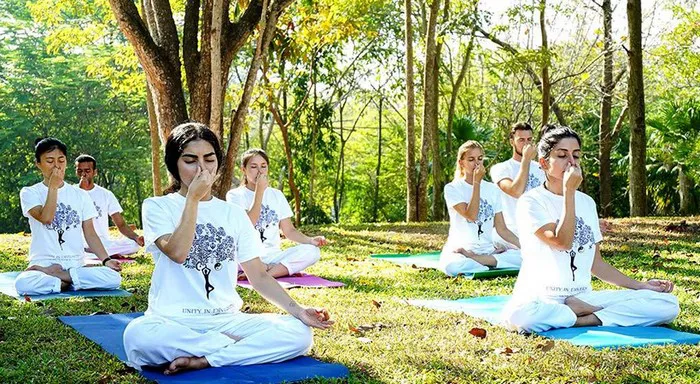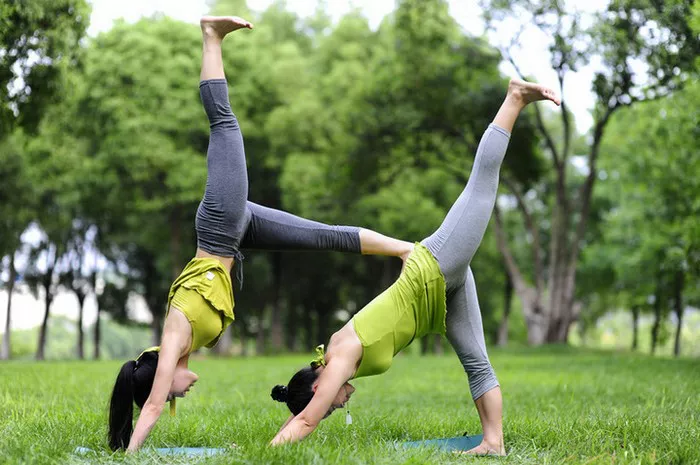In the vast realm of yoga, the spine holds a place of profound significance. Often referred to as the axis of the body, the spine not only provides structural support but also serves as the conduit for energy flow within the subtle body. Yoga, with its holistic approach to health and well-being, offers a multitude of practices aimed at nurturing the spine, and pranayama stands out as a potent tool in this endeavor.
Understanding the Spine: Foundation of Physical and Energetic Well-being
Before delving into the specific practices of yoga pranayama for the spine, it is essential to comprehend the intricate nature of the spinal column. The spine is not merely a stack of bones; it is a dynamic structure comprising vertebrae, discs, muscles, ligaments, and nerves. Moreover, from the yogic perspective, the spine is the pathway for the flow of prana, or life force energy, through the subtle channels known as nadis.
The health of the spine directly impacts overall well-being, both physical and energetic. Poor posture, sedentary lifestyles, and stress can lead to spinal misalignment, muscular imbalances, and restricted movement. Consequently, this can obstruct the flow of prana, resulting in fatigue, discomfort, and diminished vitality. Yoga pranayama offers a holistic approach to address these concerns by harnessing the breath to enhance spinal health on multiple levels.
The Therapeutic Potential of Yoga Pranayama
Pranayama, the art of breath control, is a fundamental aspect of yoga practice. Through conscious regulation of the breath, pranayama techniques influence the flow of prana, thereby harmonizing the body-mind complex. When applied specifically to the spine, pranayama becomes a potent therapeutic tool for alleviating pain, improving mobility, and restoring energetic balance.
Balancing Breath and Movement: The Essence of Spinal Pranayama
Incorporating pranayama into spinal-focused yoga sequences creates a synergistic union of breath and movement. Dynamic movements such as spinal twists, forward folds, and gentle backbends are seamlessly integrated with breath awareness and specific pranayama techniques. This mindful fusion not only enhances spinal flexibility and strength but also cultivates a deep sense of presence and inner awareness.
Exploring Pranayama Techniques for Spinal Health
Several pranayama techniques are particularly beneficial for optimizing spinal health. These practices target different aspects of spinal well-being, including flexibility, strength, alignment, and energetic balance. Below are some key pranayama techniques tailored specifically for the spine:
1. Sama Vritti (Equal Breathing): This foundational pranayama technique involves inhaling and exhaling for an equal duration, fostering balance and calmness in the mind and body. When synchronized with spinal movements, such as gentle twists or lateral stretches, Sama Vritti promotes spinal alignment and relaxation, relieving tension and promoting mobility.
2. Nadi Shodhana (Alternate Nostril Breathing): Nadi Shodhana is a powerful pranayama practice that purifies the nadis, the subtle energy channels of the body. By alternating the flow of breath between the nostrils, this technique restores energetic balance and enhances vitality. When combined with spinal stretches and rotations, Nadi Shodhana promotes circulation along the entire length of the spine, improving flexibility and promoting a sense of rejuvenation.
3. Ujjayi Pranayama (Victorious Breath): Ujjayi Pranayama is characterized by a gentle constriction of the throat, producing a soft oceanic sound during inhalation and exhalation. This rhythmic breathing technique generates internal heat and cultivates mindfulness. When practiced in conjunction with dynamic spinal movements, such as Cat-Cow or Sun Salutations, Ujjayi Pranayama enhances spinal awareness, promoting fluidity and ease of movement.
4. Kapalabhati (Skull Shining Breath): Kapalabhati is an invigorating pranayama practice that involves rapid, forceful exhalations followed by passive inhalations. This cleansing breath technique purifies the respiratory system, increases oxygenation, and revitalizes the body. When performed mindfully with gentle spinal twists or seated forward folds, Kapalabhati enhances circulation to the spinal muscles and nerves, promoting vitality and clarity.
See Also: Skull Shining Breath
Integrating Pranayama into Daily Practice
To harness the full potential of yoga pranayama for spinal health, consistency and mindfulness are key. Integrating pranayama techniques into daily yoga practice can yield profound benefits, both in the short and long term. Whether as a standalone practice or as a complement to asana (physical postures) and meditation, pranayama offers a gateway to deeper connection with the spine and the inherent wisdom of the body.
Conclusion
In the journey toward optimal spinal health, yoga pranayama emerges as a beacon of hope and healing. By embracing the symbiotic relationship between breath and movement, we can unlock the innate potential for spinal wellness within us. Through mindful awareness and dedicated practice, we can cultivate a state of harmony and balance that permeates every aspect of our being. As we align body, breath, and spirit, may we awaken to the profound wisdom encoded within the spine and embark on a transformative path toward wholeness and vitality.

















